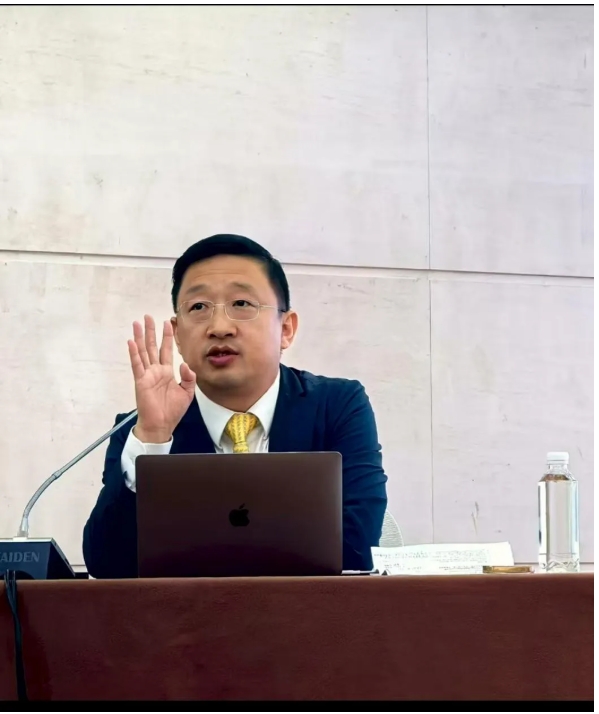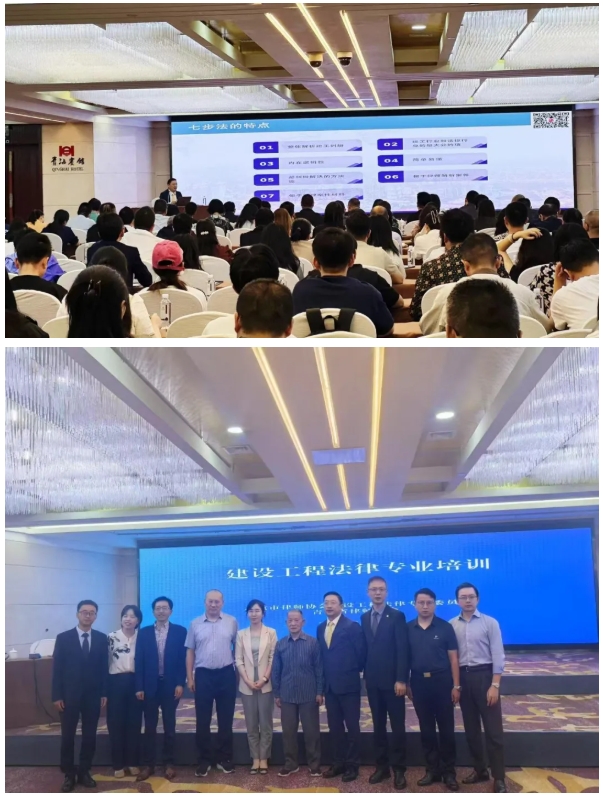Recently, the Beijing Lawyers Association's Construction Law Professional Committee successfully concluded its western outreach program in Qinghai. Over 2,000 lawyers from Qinghai participated in the event. Wang Chunjun, a senior partner at Beijing King&Capital Law Firm, shared insights on the seven-step method for construction contracts, compliance for construction companies, and construction arbitration, and distributed books on-site.


1. The Reasons and Necessity for the “Seven-Step Method”
Construction contract disputes are a complex mix of engineering technical disputes, contractual clause disputes, project management disputes, and legal disputes. They are characterized by a long formation period, numerous factual disputes, strong reliance on cost estimation and measurement expertise, lengthy appraisal periods, and unpredictable trial durations. Relying solely on expertise in one area cannot fully grasp the essence of the dispute or resolve construction contract disputes.
To better resolve construction contract disputes, legal professionals must not only analyze such disputes from a legal perspective, but also integrate engineering technology, project management, and specialized contract clause knowledge. Additionally, they must apply correct legal methodology to comprehensively and objectively identify the key points for resolving construction contract disputes. This highlights the urgent need for a methodological framework to address construction contract disputes.
Therefore, through in-depth case studies, detailed empirical research, thorough theoretical arguments, and the combined rich practical experience of our team members in construction law, we have developed the “Seven-Step Method for Analyzing Key Points of Construction Contract Disputes,” also known as the “Seven-Step Method.” This method aligns with the demands of the times and responds to the needs of the construction law services market. Most importantly, through the gradual analysis of construction dispute cases using the “Seven-Step Method” and its widespread application in such cases, not only can legal professionals such as lawyers, legal scholars, and judges reach a consensus on the approach to resolving construction disputes, but all parties involved in the disputes—including the client, contractor, subcontractor, and actual construction entity—can also establish a unified framework, thereby facilitating the resolution of construction disputes.
II. Specific Contents of the Seven-Step Method
Review the Contract:
First, determine the nature of the contract (specialized subcontracting? Labor subcontracting? EPC?) and its legal validity (invalid scenarios: bidding defects, qualification issues, subcontracting/affiliation, lack of planning permits, etc.). The validity directly impacts the assertion of rights.
Ensure quality:
Engineering quality compliance is a prerequisite for claiming engineering payments. Key points: final acceptance, unauthorized use, division of quality liability periods/warranty periods, and appraisal criteria.
Verify engineering quantities:
Confirm the actual scope and quantity of completed engineering work. Bases: standards (2024 Edition Bill of Quantities), drawings, certifications, and mutual confirmation. Note changes and omissions under fixed-price contracts.
Calculating the Construction Payment:
The core point of contention. Involves: settlement principles for invalid contracts (refer to agreements), fixed-price adjustments (change of circumstances, design changes), administrative audit restrictions, priority of payment rights, construction schedule and liquidated damages, back-to-back clauses, validity of settlement agreements, and jurisdiction. Cost appraisal requires professional collaboration.
Analyzing disputes:
Digging deep into the root causes of disputes. Analyzing contractual loopholes, project management errors, technical disagreements, and dispute resolution strategy selection (litigation/arbitration).
Determining interest:
Clarifying the timing of payment (delivery date, submission of settlement documents, filing date), and calculating overdue interest and advance payment interest in accordance with the law.
Determining Jurisdiction:
This is critical for procedural efficiency. Remember the exclusive jurisdiction for construction projects (location of the real property), note specialized court jurisdiction (railway, military, etc.), and carefully choose arbitration (efficient, professional, confidential) or litigation. The invalidity of a contract does not affect the validity of an arbitration clause.
Translated with DeepL.com (free version)




